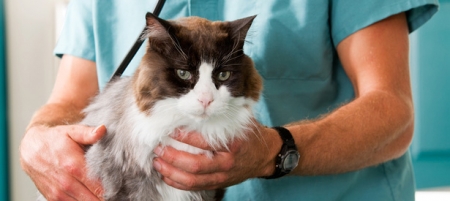

Feline Hyperthyroidism: Symptoms and Treatments
This common disease is caused by an overproduction of thyroid hormones, called T3 and T4, due to dysfunction of the thyroid glands in the cat’s neck. There are two of these glands, on either side of the windpipe. Both glands are usually affected, but this is not always the case. The symptoms mentioned previously are not the only signs of hyperthyroidism; other symptoms include vomiting, diarrhea, and a matted or greasy coat. These signs start slowly and many owners may not initially realize that something is wrong, said Dr. Audrey Cook, associate professor at Texas A&M College of Veterinary Medicine & Biomedical Sciences (CVM). Click here for full article
Join the newsletter and never miss out on cat content again!
"*" indicates required fields
By clicking the arrow, you agree to our web Terms of Use and Privacy & Cookie Policy. Easy unsubscribe links are provided in every email.




